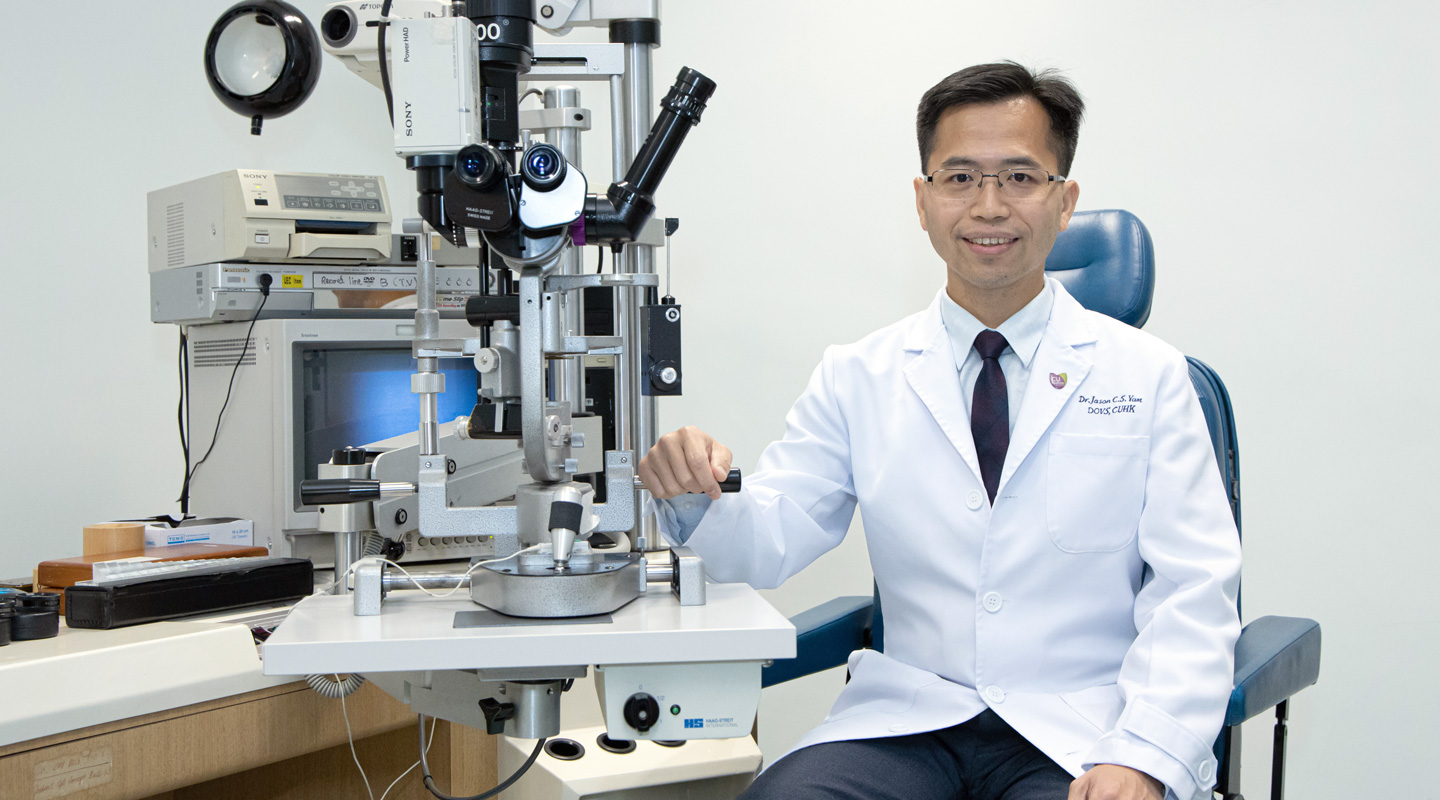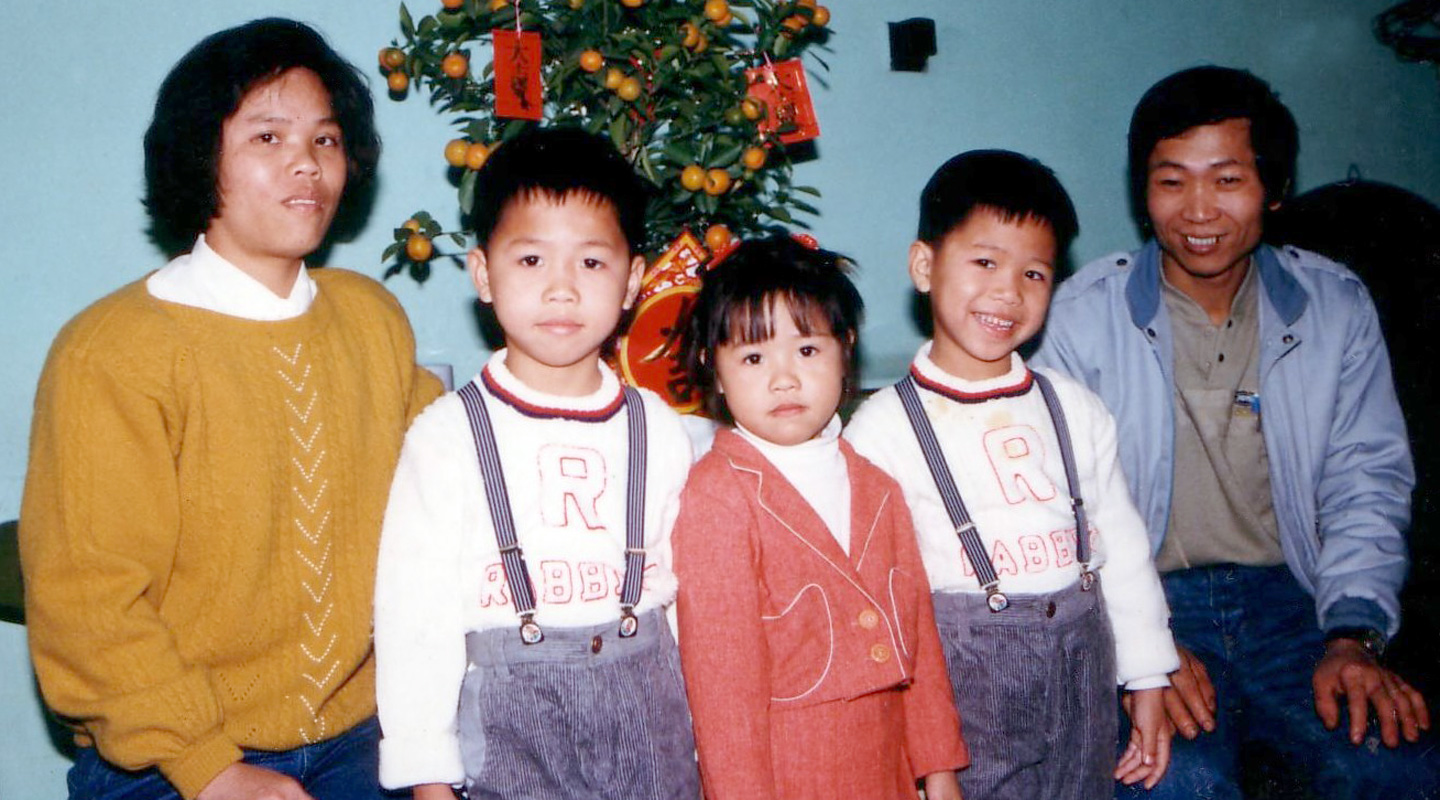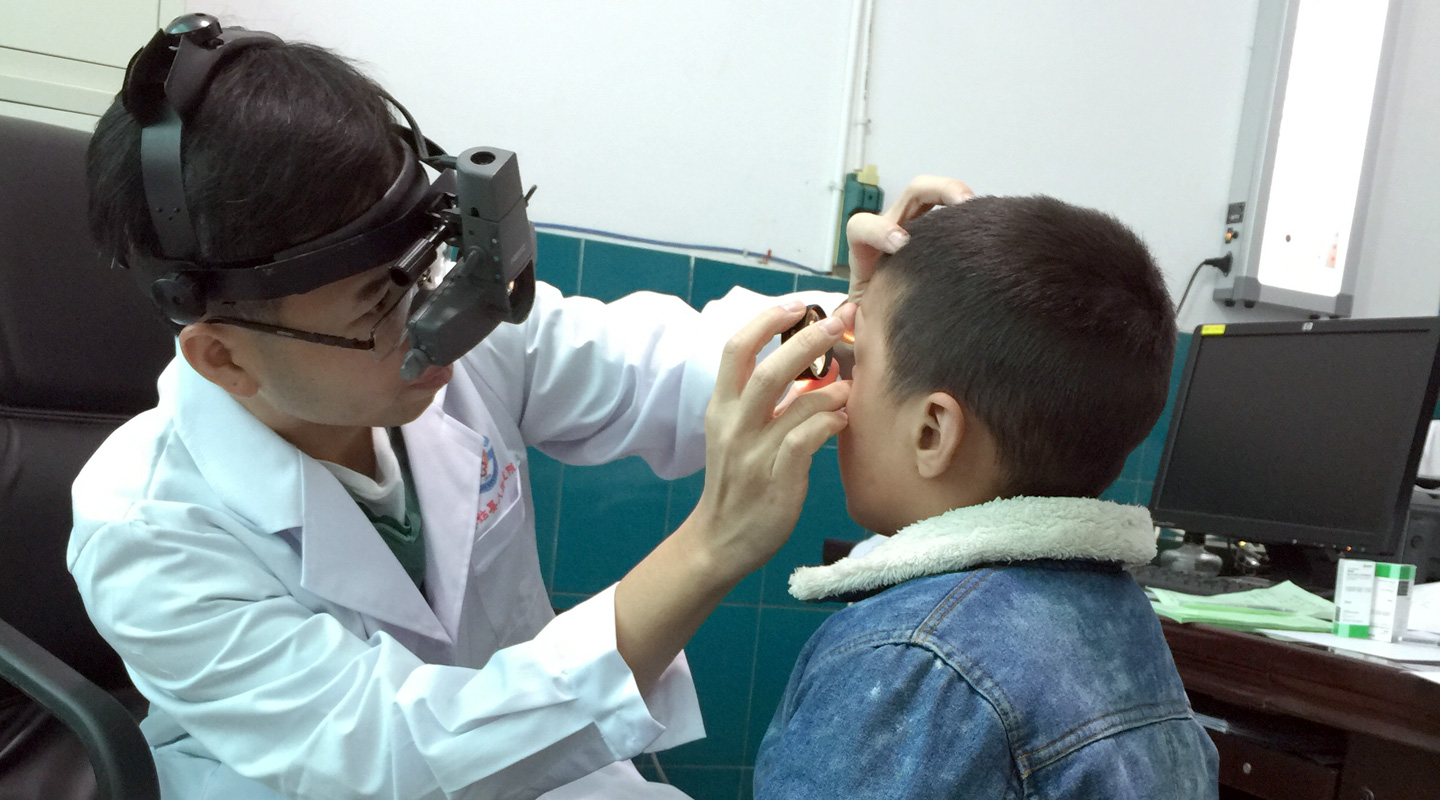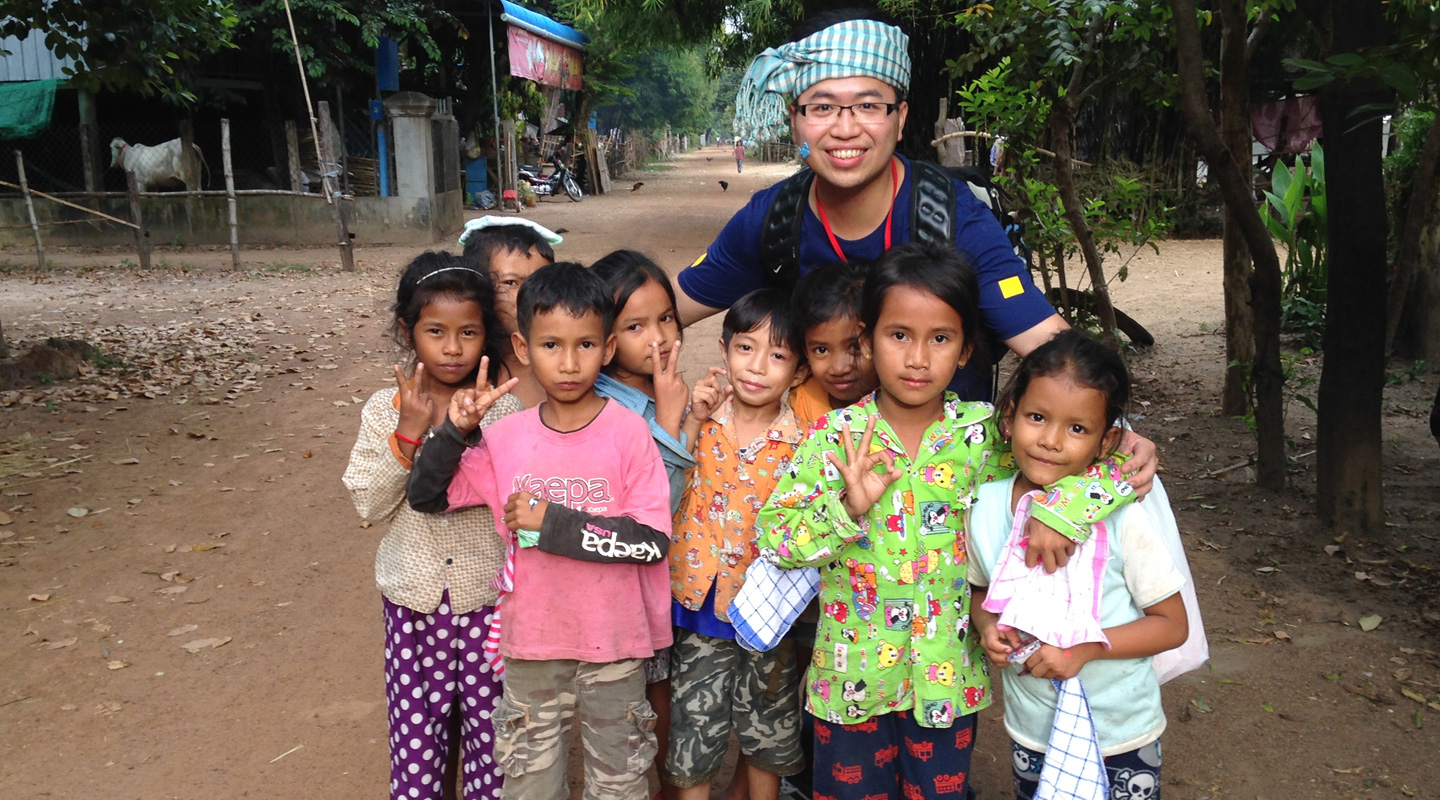Dear readers, With the launch of e-newsletter CUHK in Focus, CUHKUPDates has retired and this site will no longer be updated. To stay abreast of the University’s latest news, please go to https://focus.cuhk.edu.hk. Thank you.
Myopia Terminator
Jason Yam safeguards the windows to the soul

It is no exaggeration to say that CUHK was the biggest winner at the Ten Outstanding Young Persons Selection 2019, with four of its eight awardees hailing from the University. Among the winners is Jason Yam, associate professor of the Department of Ophthalmology and Visual Sciences. He works at the Hong Kong Eye Hospital in Kowloon Tong, an affluent district dotted with capacious townhouses and elite schools. Though Yam grew up in the same area, his childhood milieu was far from affluent—the ‘Model Village’ he lived in was a squatter settlement strewn with ramshackle wooden huts.
From his parents he learned the virtue of hard work. His mother was a cleaner; Yam used to take his twin brother and younger sister to help clean the streets so their mother could finish work early. For extra money, the four of them would manufacture keychains at home. ‘We were making ends meet but were nonetheless happy.’ Yam’s father, a meat roaster at a restaurant, had only the first day of the lunar calendar as his day off throughout each year. ‘That’s why I don’t draw any line between work and non-work life either. Full devotion to one’s job is a matter of course in our family.’

Yam was an assiduous student and, since junior high school, he would stay up and study until three o’clock in the morning. ‘I don’t have a say in how intelligent I am, so instead I focus on how much effort I put into things.’ He earned a place at the medical school of the University of Hong Kong, and after graduation worked as a doctor at the Tung Wah Eastern Hospital. He chose ophthalmology as his specialty because, in his words, ‘Darkness can be more frightening than death. Being an eye doctor can help blind people regain vision, making a most rewarding profession.’
He further honed his expertise in paediatric ophthalmology and focused on treating eye diseases in children. The visual system in children remains flexible throughout the first eight years of life. If eye diseases are detected and treated properly during these years, acute vision will return. If vision problems are not remedied in this critical period, the consequence is a lifetime of decreased vision. ‘It is a basic right for children to have a clear view of this world. I don’t want any of them to have their future jeopardized because of eye problems.’
Seven years into serving at the public hospital, Dr. Yam began thinking beyond treating patients and prescribing medications. He imagined himself pushing back the frontiers of medicine by conducting research and finding new medical solutions, so he joined the Faculty of Medicine of CUHK in 2012 and became a researcher in childhood myopia.
Near-sightedness is far from a minor inconvenience, explained Dr. Yam. ‘Myopia is attributed to an increase in the eyeball’s length. Imagine a camera that is pulled apart and the film inside is stretched thin. The photos it takes are problematic. Likewise, when children with high myopia grow into middle and old age, they have a significantly increased risk of suffering sight-threatening conditions, such as glaucoma, macular degeneration and retinal detachment.’
Dr. Yam pointed out that even if refractive surgeries like LASIK can reduce or even eliminate the need for spectacles, the flattened eyeball is irreversible and thus the vision-threatening side effects still loom. Therefore, the most effective way to control myopia and stop the eyeballs from elongating is through interventions performed before the ocular system in children matures.
In mid-2018, a research team led by Dr. Yam came up with a solution to myopia by using lose-concentration atropine eye drops—this is now the most effective treatment of childhood myopia in the world. Atropine had been used for years to arrest myopia progression, but the conventional 1% atropine eye drops cause pupil dilation, leading to photophobia and blurry near vision. Dr. Yam’s research showed the lower-concentration 0.05% atropine eye drops could slow myopia progression by 70% with significantly fewer side effects.
For example, if a child becomes near-sighted at the age of six, it’s common for her myopia to progress by 1.00 dioptre per year. By the age of 12 she would have developed a myopia of –6.00 dioptres, which is defined as high myopia. With the use of low-concentration atropine eye drops, the progression rate would be slowed to 0.30 dioptre per year. As she grows into adulthood, her myopia plateaus at around –3.00 dioptres, and such mild myopia does not increase her risk for any severe eye problems.
The team is launching a second phase of study to explore using low-concentration atropine eye drops to nip myopia in the bud. ‘Children with highly myopic parents are 12 times as likely to be myopic as those without myopic parents. The second phase of our study aims to prevent myopia onset in high-risk children.’ The simple act of putting in eye drops is able to instil a lifetime of visual well-being in the younger generation.
Another study of Dr. Yam’s has found that, in Hong Kong, where the disparity between the rich and the poor is glaring, children from low-income families are not likely to have their eye diseases detected and treated in time, which may result in permanent damage of vision. ‘I grew up in a low-income family too and understand if underprivileged children are given proper care and support, they can also have a great future. I hope to do something for them and give back to my community.’
He initiated a territory-wide eye care programme for school-age children. On weekends, they come to the CUHK Eye Centre to have their eyes comprehensively examined for free. Since 2015, more than 20,000 low-income families have benefited from the programme. The participating doctors, nurses, opticians and medical students are all volunteers, galvanized by Dr. Yam’s selfless deeds. The programme also caught the attention of the Hong Kong Jockey Club Charities Trust, and was bestowed a large donation of HK$44 million to bring in extra equipment and manpower to serve even more children. The service scheme has since been officially named CUHK Jockey Club Children’s Eye Care Programme.

Regarding adult eye care, Dr. Yam has the following advice to offer: First, follow the 30–30–30 rule: every 30 minutes spent reading, one should look away at something that is 30 feet away for 30 seconds. Second, the distance between the eyes and the smartphone or the book should be approximately 30cm; for tablet, 40cm; for desktop computer, 50cm. Third, The reading environment should be well-lit. Forth, blink more. To relieve dry eyes one can resort to preservative-free eye drops that come in single-use containers. But if the dryness and redness persist, one must go see the doctor.
As the Secretary General of the Asia-Pacific Strabismus and Paediatric Ophthalmology Society, Dr. Yam has been leading the development of vision care in children in the Asia-Pacific as a representative of Hong Kong. He has also taken up more than 20 roles in the field of ophthalmology and extended his helping hand to rural areas of Cambodia, Indonesia, Sichuan, Xinjiang and Yunan.

In a press handout about the newly elected Outstanding Young Persons, the word ‘keychain’ is entered into where Dr. Yam has chosen to best represent himself. He explained that a keychain not only epitomizes his childhood but also hints at his greatest ambition: ‘To achieve something is like opening a door. I may not be talented enough to be the key to a problem. But I can be a keychain that strings together the community, volunteers, doctors, donors and policy makers. Putting our efforts together, I hope the day will come when myopia disappears from the world.’
Christine N.
This article was originally published in No. 549/550, Newsletter in Jan 2020.